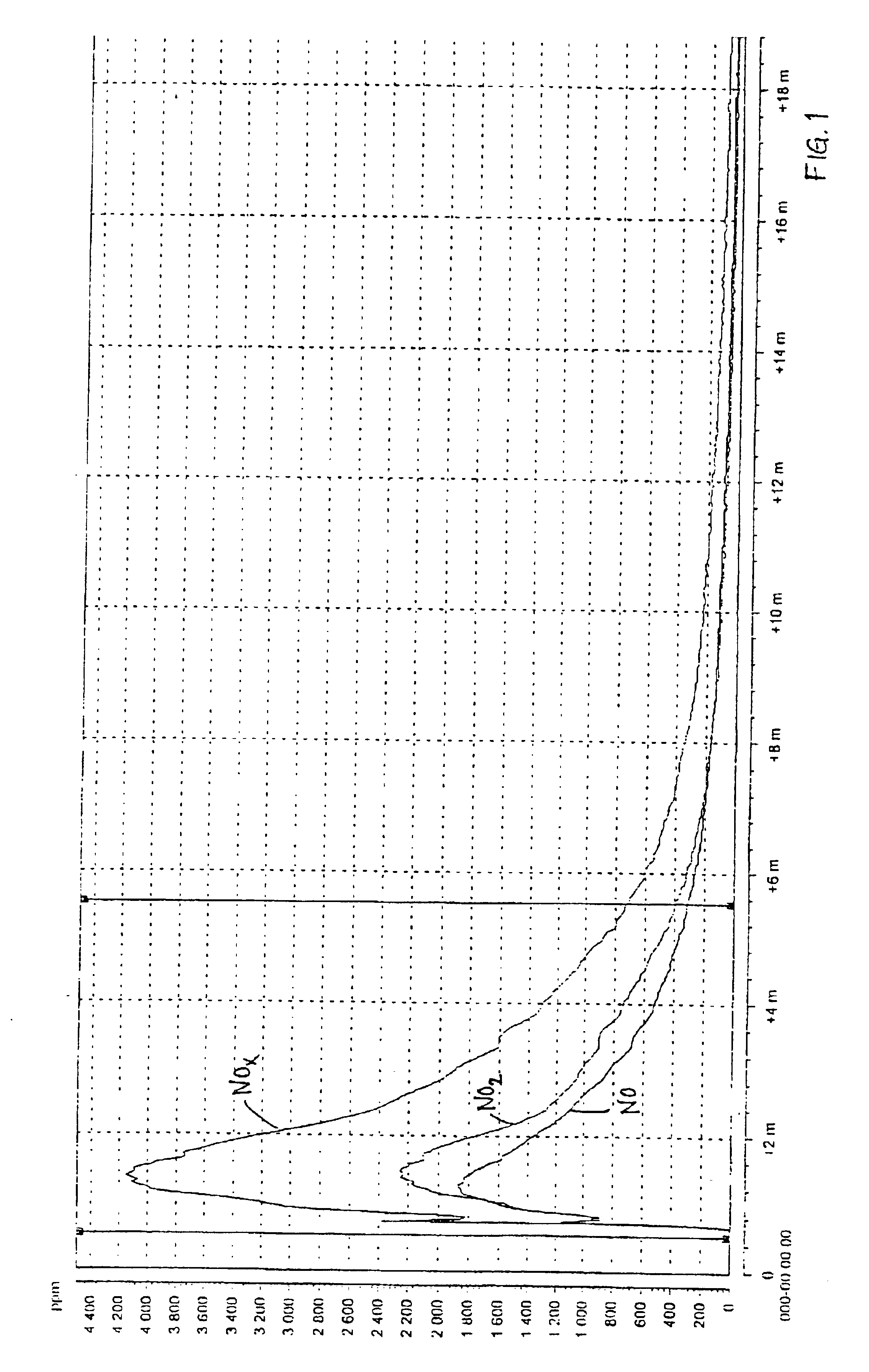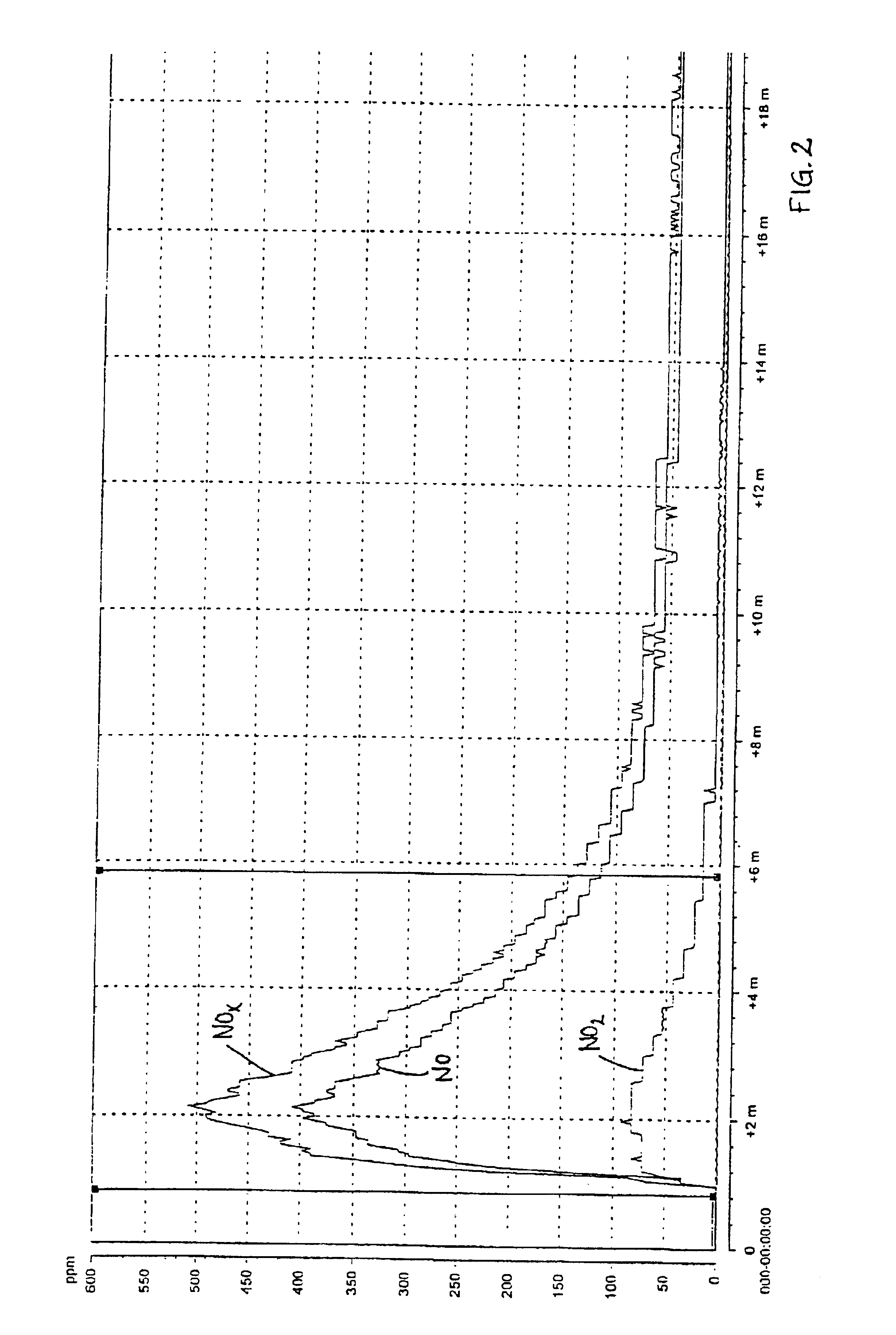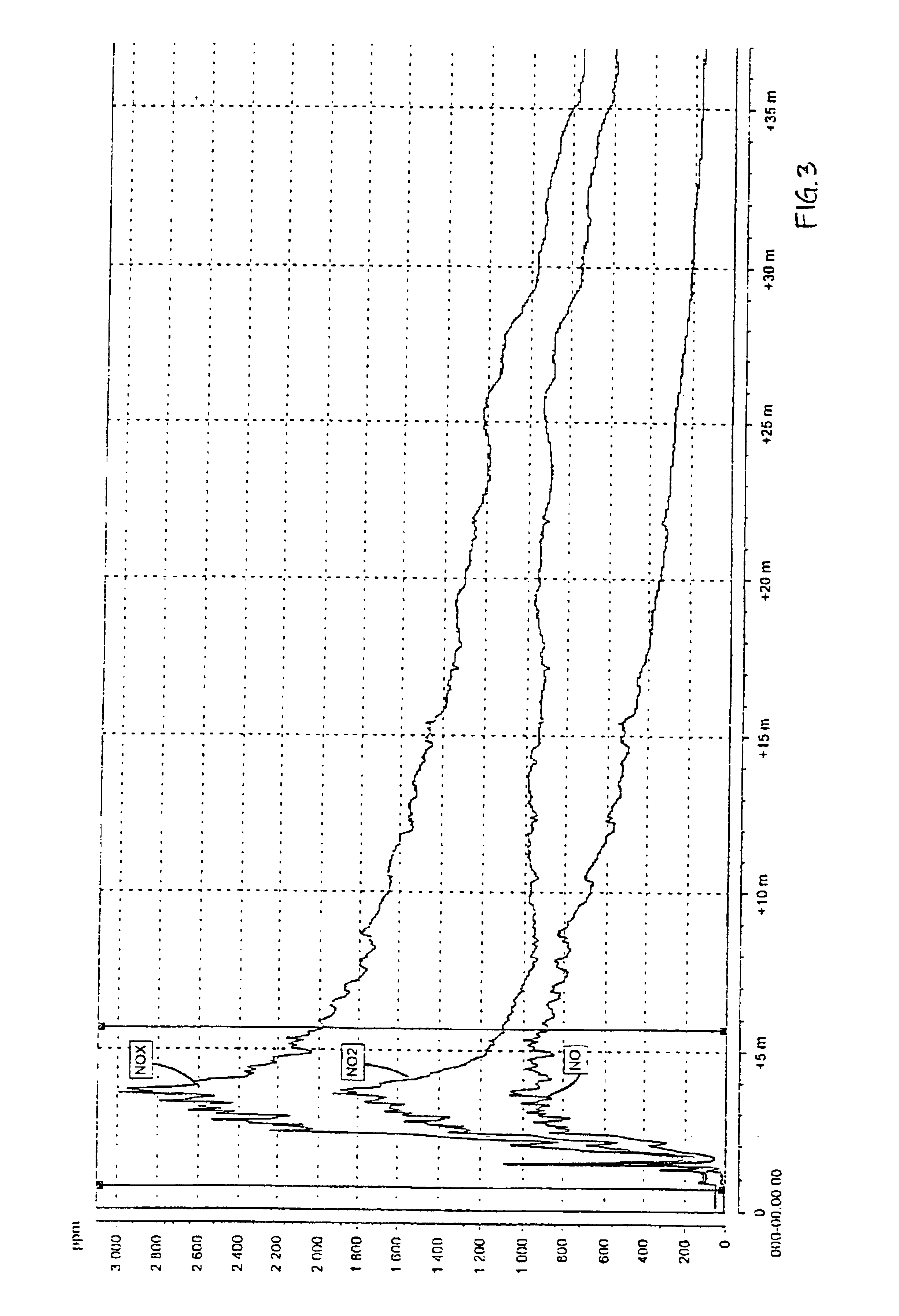Pickling agent containing urea and method of producing it
a technology of urea and pickling agent, which is applied in the direction of detergent compounding agent, detergent composition, coating, etc., can solve the problems of difficult handling, difficult to solve environmental problems, nitrate-lacking pickling agent, etc., and achieve the effect of avoiding the problem of premature urea consumption
- Summary
- Abstract
- Description
- Claims
- Application Information
AI Technical Summary
Benefits of technology
Problems solved by technology
Method used
Image
Examples
example 2
A test in a large scale with 80 g / l urea in the pickling liquid for spray pickling was performed. The liquid was caused to mature during 24 hours after the addition of urea, before the test was performed. The pickling was performed on a large scale in a testing chamber of about 100 l and a sheet of about 0.5 m2 of a 18-8 steel. The pickling solution was applied through spray pickling with an acid resistant diaphragm pump. The pickling gel of the type 122 from Avesta Welding, which was used in the tests, comprises 22 percent by weight of nitric acid, 5 percent by weight of hydrofluoric acid, 4 percent by weight of MgO, balance water.
The results of the measurement with the chemical luminescent instrument are shown in FIG. 3 (reference, without urea) and FIG. 4 (tests according to the invention). The maximum NOx-emission during the reference test was 2991 ppm and during the test according to the invention 321 ppm, which implies a reduction by 90%.
The visual judgement of the pickling re...
example 3
A large scale test with 150 g / l urea in the pickling liquid for spray pickling was performed in the same way as in Example 2. Then, differences in the pickling results was evaluated depending on the fact whether urea had been added to the pickling liquid in the form of an aqueous solution or directly in a solid condition. Visual judgement proved that the most even distribution of the liquid was obtained when the urea had been added in a solid condition directly into the pickling liquid, which also resulted in the most even pickling result. Even when urea had been added as an aqueous solution, a satisfactory pickling was however obtained.
example 4
A pickling gel with an addition of 80 g / l urea and a pickling liquid with an addition of 160 g / l urea was analysed with an instrument, Scanacon SA-20, intended for the analysis of free active acids in pickling agents. The purpose was to establish if the acid concentration is changed, when there is urea present in the solution. The results of the different analyses are shown in Table 4.
TABLE 4Analysis of acids in pickling solutionsConcentration ofConcentration ofSampleHF (g / l)HNO3 (g / l)Pickling gel + urea79280Pickling gel + urea81302after one weekPickling liquid +84207ureaPickling liquid +93182urea after one week
The result shows that even after a storage time of 7 days, there are no traces of changes in the composition of pickling gel of the type 122. The content of nitric acid in the pickling acid of the type 204 has, however, decreased somewhat after a storage time of 7 days. This fact can be compensated by an increased content of nitric acid from the beginning.
The invention is not...
PUM
| Property | Measurement | Unit |
|---|---|---|
| temperature | aaaaa | aaaaa |
| temperature | aaaaa | aaaaa |
| time | aaaaa | aaaaa |
Abstract
Description
Claims
Application Information
 Login to View More
Login to View More - R&D
- Intellectual Property
- Life Sciences
- Materials
- Tech Scout
- Unparalleled Data Quality
- Higher Quality Content
- 60% Fewer Hallucinations
Browse by: Latest US Patents, China's latest patents, Technical Efficacy Thesaurus, Application Domain, Technology Topic, Popular Technical Reports.
© 2025 PatSnap. All rights reserved.Legal|Privacy policy|Modern Slavery Act Transparency Statement|Sitemap|About US| Contact US: help@patsnap.com



